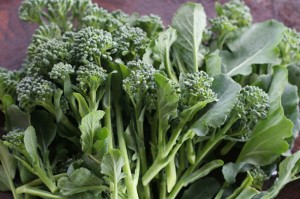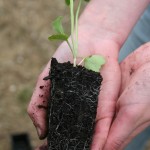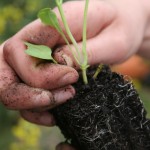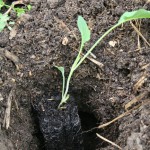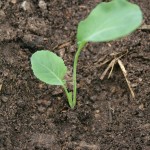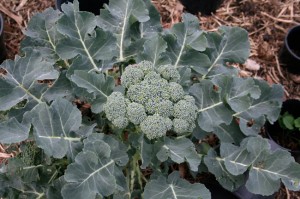I love broccoli for its versatility, because it is so easy to grow and because it’s full of the nutrients and anti-oxidants that are so important in combating our modern ills. Broccoli is in the same family as cabbages, Brussels sprouts, cauliflower, mustards and even wall flowers and stocks. I planted seed into small pots in mid summer and planted the seedlings out in the garden in late summer and have been harvesting a handful of flower heads every few days for months now. In cool and temperate climates, broccoli can be planted for most of the year except perhaps the middle of winter, so now is good time to get some seeds in. For years now I have only grown the sprouting types like Green Calabrese and Purple Sprouting. These grow with an initial ‘head’ but once this has been harvested, goes on producing small florets from side branches for a few months more.
Sow the seed into small pots in a good seed raising mixture. Water well and keep moist, seed will sprout in a few days and seedling are ready to transplant in about six weeks. I have found that transplanted seedlings do much better if they are planted deeply. Remove the lowest seed leaves and plant into the hole so the soil comes up to the first true leaves. This stabilises the plant and means it starts to grow again more quickly. Space seedlings about 40cm apart and water well with some seaweed extract in the water to reduce transplant shock. The average family needs 6 to 8 plants for a constant regular supply.
Broccoli does best in a rich, well-drained soil with a sunny position. It particularly likes nitrogen and potassium so prepare the soil by digging in compost and well-rotted manure. If your soils are acidic, add some lime. Water regularly and top dress with extra well-rotted manure, blood and bone or compost every few weeks. Once the seedlings are established mulch with pea straw or lucerne hay to suppress weeds and retain moisture.
Harvest broccoli heads while they are tight and dark green (or purple if you are growing Purple Sprouting). This applies to both a main head and the subsequent side shoots. If you miss some of the side heads so they start flowering, cut those off as well, otherwise the plant will stop producing side sprouts and put all its energy into seed production. Fewer heads will grow once plants have been producing for several months, now is the time to let one plant go to see for seed collection. Broccoli flowers are pollinated by insects and as broccoli can cross-pollinate with other brassicas you need to ensure that only one type is in flower at any time. Leave the seed to mature on the plant and collect seed pods as they begin to dry out. Put in a paper bag and label with the date and name. When completely dry, break open the seed pods and store the seed in an air-tight container out of direct light. Seed lasts for about 5 years.

